In 1983, famous magician David Copperfield caused a sensation by making New York's Statue of Liberty disappear in a live television broadcast. It is curious that almost forty years earlier, in the midst of World War II, another illusionist also carried out a magical feat of great proportions, although in his case it was not a disappearance but quite the opposite:the creation of an entire city, something that he later expanded by creating an army out of nothing. His name was Jasper Maskelyne.
He was born in London in 1902 already with the blood of a magician in his veins, since his progenitor, Nevil, and his father, John Nevil, were already dedicated to that profession. The grandfather discovered his vocation attending the shows of the famous Davenport brothers, some American spiritualists who attributed their tricks to powers from beyond, taking advantage of the fashion of that theme that was beginning to become general in Victorian England (Harry Kellar collaborated with them, to whom we dedicate an article).
The fact is that, in a show he organized in 1865, John Nevil revealed to the public that the couple's most popular trick, that of the music box, had nothing supernatural about it -he always fought what he considered a mere superstition- and He demonstrated it by recreating it himself with such success that he left the 10th Cotswold Rifle Corps, of which he was a member with his assistant, to dedicate himself to the world of entertainment.
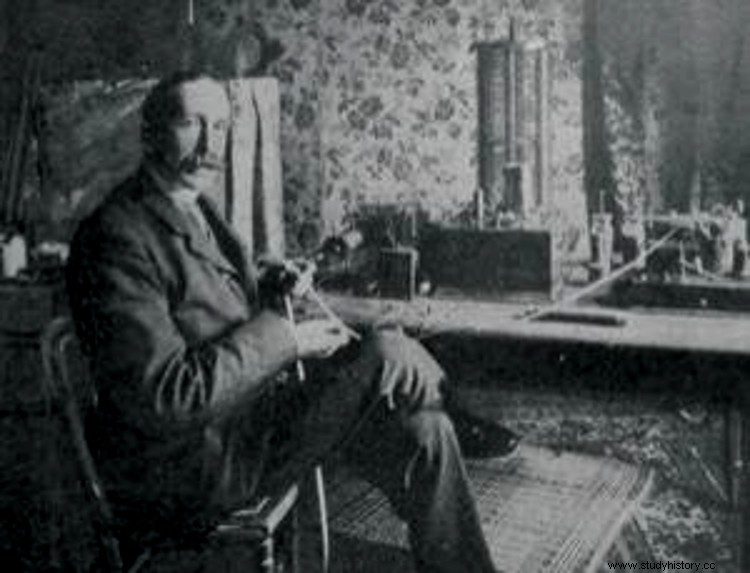
From someone like that, inventor of many illusions (among them levitation, which was sublimated by a famous collaborator, Robert-Houdin, although Kellar stole the idea from them by bribing an employee), but also of more practical things like public toilets with coin locks ( that originated the euphemism spend a dime to allude to the satisfaction of physiological needs), it was only possible to expect his son to follow in his footsteps and so it was. Nevil, born in 1863, inherited his father's art business, Maskelyne's Ltd. He may not have been as successful as a magician but as an inventor, being one of the pioneers of wireless telegraphy and going up against Marconi, whose demonstrations he tried to sabotage.
However, he published several books on magic, such as Our Magic:The Art in Magic, The Theory of Magic, The Practice of Magic and On the Performance of Magic . That is why after marrying Ada Marie Adley and having three children, it seemed inevitable that someone would continue the family tradition by dedicating himself to illusionism.
The two minors did it, the youngest being the one who had the most success:Jasper. Like his father, in 1936 he too wrote a treatise, The Book of Magic (The book of magic), in which he reviewed a lot of tricks, some sleight of hand, others with cards and several on a larger scale, based on the subjectivity of perceptions, which prefigured what was to be his great professional achievement.
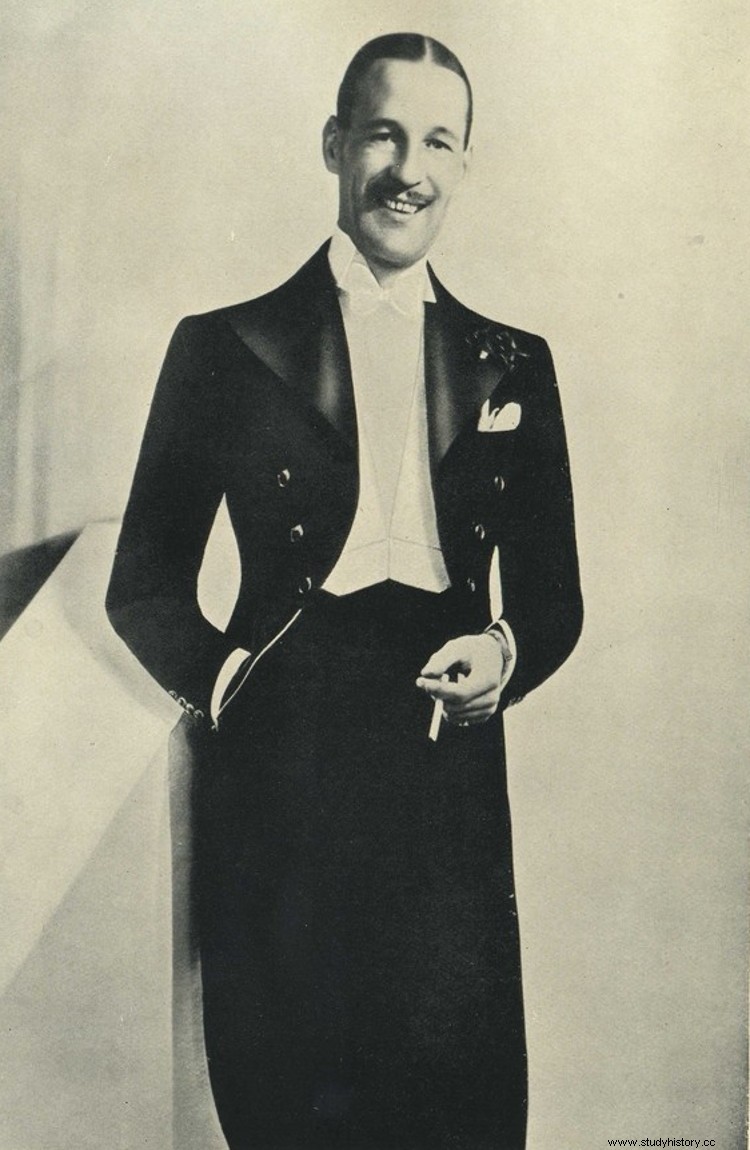
In 1937 he even starred in a film by Pathé (a film business group founded in 1896 by brothers Charles, Émilie, Théophile and Jacques Pathé), The Famous Illusionist , in which Jasper appeared eating razor blades. Those were booming years but the dark clouds of war loomed on the horizon and, when it finally broke out, he enlisted in the Royal Engineers, as he thought his knowledge could help with camouflage. It was not petulance, as we shall see; but, if legend is to be believed, he was unable to persuade the officers of his skepticism until, resorting to mirrors and a model, he astonished them by seeing a Kriegsmarine vessel sailing down the Thames.
If that story is true, it was so convincing that in 1940 he was assigned to Farnham Castle, a 12th-century castle in Surrey, whose 20,000 square meters served as the headquarters for the Camouflage Development and Training Centre (Camouflage Training and Development Center). There he met other artists, all of them good representatives of surrealism, such as Roland Penrose (Quaker historian and poet, author of Home Guard Manual of Camouflage ), Stanley William Hayter (painter and printmaker), and Julian Trevelyan (poet and printmaker).
Jasper would later state that it was a boring period because he had learned much more about the art of concealment and pretense on stage than he had there. For his part, Trevelyan said that his partner had failed in the attempt to camouflage pillboxes (a type of bunker made with concrete blocks), although he admitted that he entertained them at night with his sleight of hand.
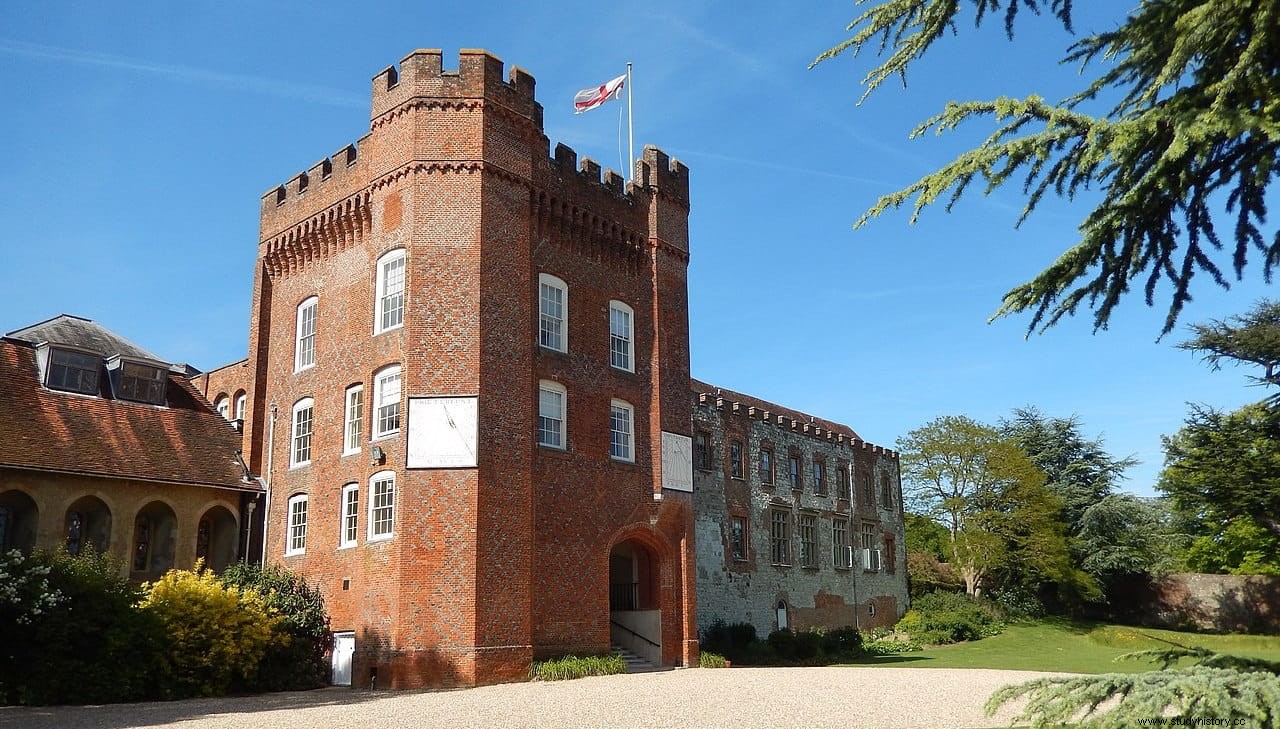
Then Brigadier Dudley Clark, creator of the British Commandos entered the scene. , that he had received from a former superior, General Archibald Wavell, the commission to develop an intelligence section whose specialty was camouflage, with a view to applying it in the North African campaign that he had commanded. Jasper traveled to Cairo, where Wavell had created the A Force and he let the magician assemble a group of fourteen men from various specialties who became known as The Magic Gang , the Magic Band. He was to teach soldiers evasion techniques and design small tools that could be hidden in everyday objects, like saws in cricket bats or maps on seemingly ordinary playing cards.
In November 1941 he joined the Middle East Command Camouflage Directorate , the unit of Lieutenant Colonel Geoffrey Barkas, a former filmmaker who had written manuals on camouflage techniques for vehicles with nets, in addition to having one of his officers, the artist Steven Sykes, who had on his resume the decoration of a chapel from Coventry Cathedral, build a fake train that would divert the attention of enemy bombers from the real railway line, the one that linked the coast with Misheifa, a fundamental route for the arrival of supplies.
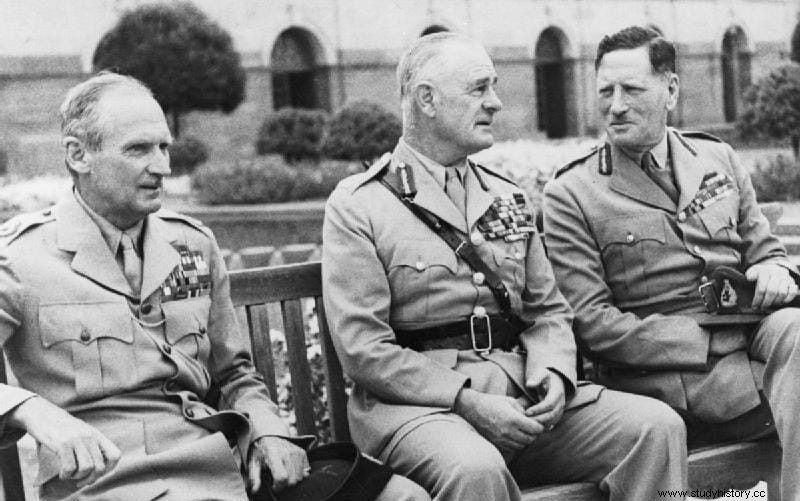
But that stage was brief because he then went on to the Camouflage Experimental Section of Abbassia, also in Egypt, and in February 1942, since that section was disbanded, he was assigned to entertain the troops with his magic tricks. Doubts about the degree of participation and responsibility that he had in certain actions that, in the end, were the ones that gave him fame remain on the table.
The first, the protection of the port of Alexandria against air attacks, for which a city of props was built a few kilometers further, in the town of Maryut Bay, in the summer of 1941. Likewise, the lighting reflectors of the Suez Canal they were used to hinder German pilots by reflecting light beams off rotating strobe mirrors.
More famous would have been the aforementioned collaboration with Steven Sykes in Operation Bertram , a plan to trick Rommel into thinking there was an army that didn't really exist. For this, six hundred tanks were built and thousands of dummies were placed, in addition to erecting barracks, warehouses and even a fake oil pipeline, all with improvised materials and accompanied by radio signals that imitated the noise of the activity to confuse the Afrika Korps . Incredibly, the trap worked and influenced the development of the Battle of El Alamein, because, as General Wilhelm Josef Ritter von Thoma later confessed to Montgomery, they thought there was an armored division hidden to attack them from the south.
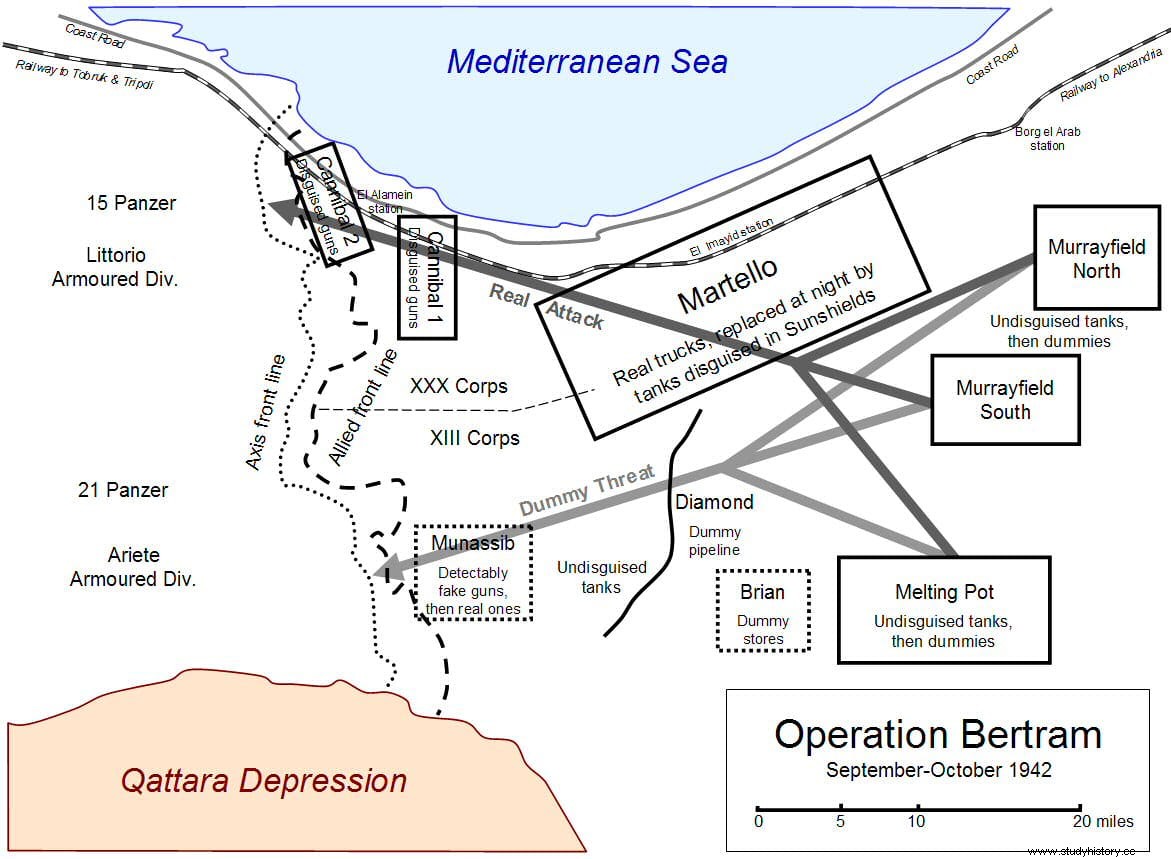
Although in his book Magic Top Secret , published in 1949, Jasper grants himself a fundamental role in that deception, it seems that in reality he did not take a direct part and that only his ephemeral tenure under Barkas's orders had made him remember some tricks that he had proposed to them, which were in the ones that were inspired the ones that were finally applied. At least that is what many authors who have reviewed the subject believe today, some of whom accuses him of claiming "to have won the war alone."
Now, another interesting theory is that the magician exaggerated his protagonism by order of Clarke, to protect the true architects of the Operation Bertram from German counterintelligence. , as well as to highlight the importance of these techniques, until then not taken too seriously by the Allied commanders (for Operation Overlord instead, they took good note and created a ghost army). The truth about Jasper probably won't be known until 2046, when the files still under wraps will be declassified.
In any case, at the end of the contest the magician returned to the stage and was named president of the Wessex Magical Association. But times had changed and neither those shows attracted as much as before due to television competition nor his son Alistair wanted to continue the trade. Even though he got the nickname of War Magician (War Wizard), his role was never officially recognized, which saddened him and made him fall into alcoholism. He died in Kenya, where he had retired fleeing debt to end up running a driving school, in 1973.
Fonts
White magic. The story of Maskelynes (Jasper Maskelyne)/The War Magician. The man who conjured victory in the desert (David Fisher)/Churchill's wizards:The british genius for deception 1914-1945 (Nicholas Rankin)/Dazzled and deceived. Mimicry and camouflage /(Peter Forbes)/The palm tree and the swastika. The odyssey of the Afrika Korps (Carlos Canales Torres and Miguel del Rey)/Wikipedia
